What is driving the energy storage industry at the moment, and adversely, what is holding it back? This scene-setting talk will start by looking at the incumbent lithium-ion and focusing on challenges when it comes to decarbonising the mineral, ensuring sustainable production and future availability for the market. We need to have back-up options to ensure we don’t get past the point of no return, with over-reliance on one technology and the market ends up stagnating. Gerard’s talk will set the scene for later discussions around energy security, investment strategies, supply chain issues, differing markets and how the industry can rally together to solve these problems as quickly as possible.
This opening session will shed light on what needs to happen to ensure the power grid is fit for purpose, resilient and flexible.

Join a behind the scenes recording of Quentin and a special guest (to be announced!) delivering their insightful and fun podcast series live on stage at the Energy Storage Summit, with the opportunity for Q&A afterwards.
Every colocation project is different meaning that there is no one size fits all in terms of best practice for developing projects. Big wins can be made when collocating assets by addressing:
Long-duration has been around for a long time, but the urgency to find a scalable solution offering longer-duration and alternatives to lithium-ion energy storage is growing on a daily basis. This opening session will set the scene on what is needed at a policy level, what is already happening and where the market needs to be in the short-term. We will then hear about some of the closer to market technologies in a ‘lightning round’, followed by roundtable discussions with key stakeholders and experts.
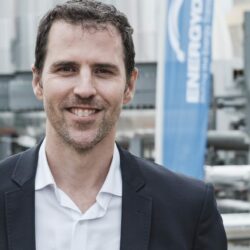
This is your chance to hear about the benefits and pitfalls of some of the storage technologies out there which aren’t at the scale of lithium-ion, but are edging closer to taking a larger market share. Technology providers will take part in a ‘lightning round’ where they pitch their technology to the audience, followed by the option to join discussion tables after the pitches.
As size and complexity of energy storage projects increase, how is the most value captured through optimisation?
Each energy storage project has unique characteristics including the location and the technologies being used. Consequently, a bespoke approach to protect against fires for each project must be undertaken. This session discusses the best approaches to:
This is your chance to hear about the benefits and pitfalls of some of the storage technologies out there which aren’t at the scale of lithium-ion, but are edging closer to taking a larger market share. Technology providers will take part in a ‘lightning round’ where they pitch their technology to the audience, followed by the option to join discussion tables after the pitches.
With snowballing issues around grid connections, will we start seeing co-located projects become more favourable and what is the best approach?
Join Q & the team at The Steel Yard Club, East London, to unwind after a busy day and enjoy a few drinks in a more relaxed setting.
This opening address will explore the UK’s progress towards a fully renewable, electric economy, and the steps needed to ensure the country’s energy infrastructure can deliver a decarbonised future, lower bills and provide energy security, drawing upon the recommendations to government in the Commission’s second National Infrastructure Assessment.
This session will look at some specific outcomes and policy strengths for the UK market in detail, including the evolution of the capacity market, Locational Marginal Pricing, REMA and other important areas.
An interview with key stakeholders in the UK who will shed light on the roadmap for connection policies and plans, the current grid connection landscape and what solutions are in place at ESO and DSO level.
This follow-on discussion will go into detail on the next steps for much-needed connections policy reform in the UK, including longer-term solutions such as:
Learn about how the Univers fleet monitoring solution for utility scale BESS redefines energy storage management with an integrated solution for monitoring and asset performance of BESS from any OEM or Integrator. This cloud based solution seamlessly combines advanced technology and analytics, offering real-time insights into the health and commercial effectiveness of energy storage systems. Using predictive analytics, it empowers proactive maintenance, minimizing downtime and optimizing overall fleet performance in trading markets. In combination with the Univers offering for site SCADA and EMS/PPC it works seamlessly to optimise day-to-day operations and maximise revenues.
The GB market has led BESS growth in Europe, but Germany & Italy are set to accelerate. This presentation will address the investment opportunity in what are likely to be Europe’s next two big storage growth markets:
The LDES landscape continues to go from strength to strength and there are now more calls to deploy long-duration globally than ever before.

This presentation is structured around two fundamental pillars. Initially, we delve into the dimensions of the battery energy storage markets, outlining the pivotal role it plays in meeting global energy system demands aligned with various climate goals.
The second pillar addresses the economic concerns behind investing in or launching a BESS business. We analyze the diverse revenue streams associated with BESS, showcasing the profitability of the business, particularly highlighting that since 2022, energy arbitrage alone has made BESS a lucrative venture in Europe. Our presentation further explores the revenue variances across different duration systems and touches upon battery chemistries as well.
From new asset management approaches to implementing advanced analytics tools, how are asset owners aiming to achieve revenue goals?
The battery energy storage system (BESS) industry is expanding at a rapid rate, with forecast demand continuing to rise exponentially in line with global shifts towards renewable energy sources. The downside of Lithium-Ion batteries is the safety risk associated with flammable nature of Lithium-Ion batteries.
Every fire that can be prevented helps to increase availability, save costs and increases public confidence in the safety of the BESS, a goal that this presentation will explore.
Amid growing environmental concerns around the production, safety and disposal of lithium-ion batteries, Alan Greenshields will discuss how alternative, commercially available Long-Duration Energy Storage (LDES) technologies will power the global energy transition.
One example, which is beginning to be deployed across Europe, in the US and in Australia is iron flow technology. These systems are made with earth-abundant materials: iron, salt and water and can deliver the storage capacity and energy security urgently needed worldwide. Iron flow technology leverages a broad supply chain and can be manufactured and serviced locally, delivering energy security, decarbonisation and economic opportunity to communities worldwide. With their inherent safety and low carbon footprint, iron flow batteries can withstand the elements and operate safely in hot, wildfire-prone regions.

ESS for start-up to medium-sized projects.
As ESS booms and power markets become increasingly saturated, uncertainty looms around future revenue streams and asset lifetimes. This presentation explores how advanced battery analytics helps safely seize today’s revenue potential & maximize short-term value while future-proofing. Learn how intelligent software increases asset agility, providing a simulation toolkit that enables deeper participation in today’s power markets whilst also optimising for long-term health and battery safety.
After the final networking break on Day Two, while some targeted breakout sessions continue, we invite all delegates to unwind and enjoy a casual ‘Happy Hour’ session, sponsored by Rimac. Sip and socialise as you wind down with a drink until 5.30pm.
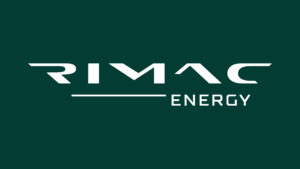


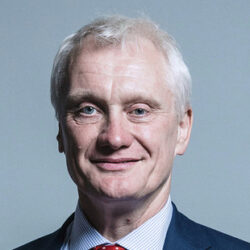
The EU currently stands at just over 60 GW total installed capacity and has its own Everest to climb before the decade comes to a close. Recommendations from the European Commission estimate that the industry will need around 200 GW of operational capacity by 2030, tripling to 600 GW in 2050. The International Energy Agency (IEA) has forecast that the global installed capacity of battery storage will need to rise from less than 200 GW to more than a terawatt by the end of the decade. So, what does the industry need to change, innovate, or completely shake up to get us there?
The UK has published its British Energy Security Strategy, which details plans to ensure energy independence in the face of global tensions, complicated geopolitics and an urgent need for change to happen quickly.

What is driving the energy storage industry at the moment, and adversely, what is holding it back? This scene-setting talk will start by looking at the incumbent lithium-ion and focusing on challenges when it comes to decarbonising the mineral, ensuring sustainable production and future availability for the market. We need to have back-up options to ensure we don’t get past the point of no return, with over-reliance on one technology and the market ends up stagnating. Gerard’s talk will set the scene for later discussions around energy security, investment strategies, supply chain issues, differing markets and how the industry can rally together to solve these problems as quickly as possible.
This opening address will explore the UK’s progress towards a fully renewable, electric economy, and the steps needed to ensure the country’s energy infrastructure can deliver a decarbonised future, lower bills and provide energy security, drawing upon the recommendations to government in the Commission’s second National Infrastructure Assessment.
After a whirlwind year of new decarbonisation policies, energy-security strategies and beneficial subsidies, this opening session will enlighten the audience on the pathway to European electric market design reform. Our opening interview will highlight changing market structures, intervention, and implications for energy storage. Can the many different support mechanisms being discussed really help give storage the boost it desperately needs?
With the promise of a new government catalysing much-needed new ambition and a change of pace for the United Kingdom on its path to net-zero, what action will the government take to address barriers to electricity storage, delivering the Clean Power 2030 Action Plan and Flexibility Roadmap?

This opening session will shed light on what needs to happen to ensure the power grid is fit for purpose, resilient and flexible.

The International Energy Agency (IEA) has forecast that the global installed capacity of battery storage will need to rise from less than 200 GW to more than a terawatt by the end of this decade. For the first time, we will host a storage leaders ‘Ask-Me-Anything’ style session, with a focus on bringing together leaders and spokespeople for the most innovative and successful energy storage players of this decade, to discuss the issue at hand – how do we get there? We will ask delegates to send in their questions in advance, with the onus being on getting the big questions from the audience answered, with the conversation led by the industry.
Reaching net-zero by mid-century relies on scaling clean electrification. Running power systems based on high shares of wind and solar will in turn require meeting a balancing challenge – which can differ significantly across countries. This keynote will present the ETC’s latest analysis on the technologies and costs to meet system balancing – including the critical role of storage and key enablers required to scale faster.
This session will look at some specific outcomes and policy strengths for the UK market in detail, including the evolution of the capacity market, Locational Marginal Pricing, REMA and other important areas.
The European Union’s groundbreaking Battery Passport initiative is set to revolutionise the energy storage industry by introducing transparency, traceability, and sustainability standards for batteries. This panel will delve into the profound implications of Battery Passports on the energy storage sector, exploring how this innovative concept will reshape the industry, influence business strategies, and drive advancements in technology and sustainability.
GB has a bold ambition for Clean Power by 2030 backed by a mission-led approach. What will it take to get to Clean Power and what is energy storage’s vital role? This keynote will lift the lid on NESO’s analysis, on actions being taken to maximise the opportunities for flexibility, and outline what is still to come.
What is the long-term vision for energy storage from a system operator planning perspective? How are system operators prioritising creating the right investment signals for the community to respond to in their relevant networks? In this keynote panel, we take a closer look at the future roadmaps for some of the key markets, identifying any major challenges in the lead-up to 2040.

As the power system transitions towards renewable energy, the shift from synchronous to variable inverter-based resources unravels intricate technical challenges, particularly concerning system inertia and short circuit levels. Market structures are adapting to incentivise technologies, acknowledging the need for essential support in stabilising the grid. Within this dynamic, Grid Forming Battery Energy Storage Systems (BESS) emerges as a unique player. Beyond mere stabilisation, BESS becomes an enabler of value generation for both system operators and consumers, offering a diverse range of services. In exploring the subtleties of this shift, we recognise the necessity for a holistic approach—a journey that extends beyond immediate challenges towards a harmonious integration of renewable energy.

An interview with key stakeholders in the UK who will shed light on the roadmap for connection policies and plans, the current grid connection landscape and what solutions are in place at ESO and DSO level.

In today’s rapidly evolving energy landscape, efficiency, flexibility, and scalability are key to sustainable power solutions. This presentation explores how the all-in-one Energy Storage System (ESS) with AC Block is transforming energy storage by offering seamless full-scenario applications.

Noise concerns are increasingly shaping the regulatory landscape for energy storage projects. Addressing noise early in the design phase will not only help meet local regulations, but will also support the larger goal of building more resilient and sustainable energy systems.
In this presentation, we will cover the following key topics:
By the end of this presentation, you will have a comprehensive understanding of the importance of acoustics in BESS operations and available solutions to address noise-related challenges.

Join us for the big debate, where we will be asking representatives with a strong track record in European markets to go head-to-head on which markets they think have the most promise, and why.

In such a fast-paced industry, keeping an ear to the ground is fundamental to staying ahead of the game. Key players must stay abreast of which markets are up and coming, which technology is bankable and investor-friendly or which business case is best. Diversification is also key to enabling the market to flourish. This session will take a birds-eye view of what to consider in scenarios like:
This follow-on discussion will go into detail on the next steps for much-needed connections policy reform in the UK, including longer-term solutions such as:
Long-duration has been around for a long time, but the urgency to find a scalable solution offering longer-duration and alternatives to lithium-ion energy storage is growing on a daily basis. This opening session will set the scene on what is needed at a policy level, what is already happening and where the market needs to be in the short-term. We will then hear about some of the closer to market technologies in a ‘lightning round’, followed by roundtable discussions with key stakeholders and experts.
Join a behind the scenes recording of Quentin and a special guest (to be announced!) delivering their insightful and fun podcast series live on stage at the Energy Storage Summit, with the opportunity for Q&A afterwards.
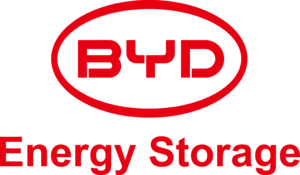
Learn about how the Univers fleet monitoring solution for utility scale BESS redefines energy storage management with an integrated solution for monitoring and asset performance of BESS from any OEM or Integrator. This cloud based solution seamlessly combines advanced technology and analytics, offering real-time insights into the health and commercial effectiveness of energy storage systems. Using predictive analytics, it empowers proactive maintenance, minimizing downtime and optimizing overall fleet performance in trading markets. In combination with the Univers offering for site SCADA and EMS/PPC it works seamlessly to optimise day-to-day operations and maximise revenues.
Every colocation project is different meaning that there is no one size fits all in terms of best practice for developing projects. Big wins can be made when collocating assets by addressing:
The GB market has led BESS growth in Europe, but Germany & Italy are set to accelerate. This presentation will address the investment opportunity in what are likely to be Europe’s next two big storage growth markets:
![]()

Things are starting to heat up across Europe, with countries like Italy or the Republic of Ireland going down the route of procurement support mechanisms and capacity market schemes, whereas countries like Germany or the Netherlands are predicted to remain very merchant-led. How are different European markets approaching the urgent need to procure long-term energy storage to support grid infrastructure and drive deployment of renewables? Which is the best way to do it, and make sure that the storage assets will last the test of time? This session will take into consideration things like:
This is your chance to hear about the benefits and pitfalls of some of the storage technologies out there which aren’t at the scale of lithium-ion, but are edging closer to taking a larger market share. Technology providers will take part in a ‘lightning round’ where they pitch their technology to the audience, followed by the option to join discussion tables after the pitches.
Certain markets may have experienced a decrease in activity or revenues, with others being buoyed by new market mechanisms, competition and appetite from new players. However this much is clear: the long-term appetite to invest in renewable energy and energy storage in particular, is stronger than ever. This panel will bring cross-market players from leading infrastructure and institutional investors, owner operators and technology providers together to discuss how they see the shift in the market today, exploring:
Microsoft, supported by Enel X, leverage fast responding, grid-interactive UPS systems at Microsoft data centre in Dublin to help balance Ireland’s electricity grid.
Each energy storage project has unique characteristics including the location and the technologies being used. Consequently, a bespoke approach to protect against fires for each project must be undertaken. This session discusses the best approaches to:
The LDES landscape continues to go from strength to strength and there are now more calls to deploy long-duration globally than ever before.

Many companies are looking into the next big opportunities for energy storage. This panel will discuss:
This is your chance to hear about the benefits and pitfalls of some of the storage technologies out there which aren’t at the scale of lithium-ion, but are edging closer to taking a larger market share. Technology providers will take part in a ‘lightning round’ where they pitch their technology to the audience, followed by the option to join discussion tables after the pitches.
As early movers in energy storage, Trina Storage and Aquila Clean Energy have played a key role in advancing BESS deployment in Germany. This session will explore how their long-term partnership, including recent projects Strübbel and Wetzen, is helping to deliver critical grid services with flexible, high-performance systems. Discover the business case behind these storage projects and how flexible, cost-optimized solutions support the investment. Hear from our speakers on key project learnings and how adaptable BESS solutions can be applied across other key European markets to enhance energy resilience and profitability.

The Electricity Storage Network, managed by Regen, is an industry group and voice for grid-scale electricity storage in GB. We have over 100 member organisations working to develop, operate and supply grid scale storage in the GB market.
We would like to invite you to join us, helping to shape and influence government policy and to advocate for the potential of key storage technologies to reduce consumer bills and deliver Clean Power 2030.
This workshop will outline draft policy priorities for industry feedback and discussion. Helping to foster collaboration among industry parties and shape policy policies to feed into policymakers. If you are unable to make it contact Olly if you would like to arrange a one-to-one meeting during the Summit.
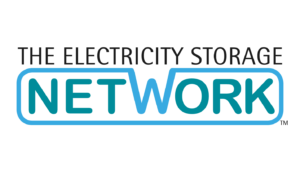
Against a complicated backdrop of global politics and economics, how should we see the investment case for energy storage and how is that evolving?
As size and complexity of energy storage projects increase, how is the most value captured through optimisation?

Although very rare, recent energy storage fires are prompting manufacturers and project developers to ask serious questions about how to design safer projects. Code requirements and fire detection systems vary between manufacturers and regions, meaning compliant battery energy storage system design and permitting packages are important to ensure projects are as safe as possible. What can and should be done to ensure that projects are safe?
From new asset management approaches to implementing advanced analytics tools, how are asset owners aiming to achieve revenue goals?

This presentation is structured around two fundamental pillars. Initially, we delve into the dimensions of the battery energy storage markets, outlining the pivotal role it plays in meeting global energy system demands aligned with various climate goals.
The second pillar addresses the economic concerns behind investing in or launching a BESS business. We analyze the diverse revenue streams associated with BESS, showcasing the profitability of the business, particularly highlighting that since 2022, energy arbitrage alone has made BESS a lucrative venture in Europe. Our presentation further explores the revenue variances across different duration systems and touches upon battery chemistries as well.
The battery energy storage system (BESS) industry is expanding at a rapid rate, with forecast demand continuing to rise exponentially in line with global shifts towards renewable energy sources. The downside of Lithium-Ion batteries is the safety risk associated with flammable nature of Lithium-Ion batteries.
Every fire that can be prevented helps to increase availability, save costs and increases public confidence in the safety of the BESS, a goal that this presentation will explore.
Do you want to be part of the next generation of energy storage?
We can help you achieve this goal and elevate your career with a special session exclusively taking place on Day 0 – 17 February 2025 at the Energy Storage Summit. We’ve partnered with ReWiRE, Regen’s vibrant network for women in clean energy, to run an in-person speed mentoring session at the Summit.
The ReWiRE mentoring programme has been hugely popular, supporting women to enhance their potential through career choices and working practices as well as building their professional networks and profile. It matches the experience of one person with the potential of another, building personal and strong bonds with senior women and men across the sector.

The Australia Café aims to promote Investor-Developer Engagement into Australia. Operating under Chatham House Rules and facilitated by Austrade, this deep-dive session will provide insights into:
As an invitation-only session, it will take the following structure:
12:45 – 12:55 – Welcome and Scene Setting
Australia: Global Energy Superpower and Role of Renewables and Storage – Speaker: David Camerlengo, Senior Trade & Investment Commissioner UK and Ireland, Australian Trade & Investment Commission
12:55 – 13:10 – Policy Update and Government Support
Securing the System: Investing in Australia’s Energy Future – Speaker: Kris McCoy, Senior Climate, Energy and Resources Counsellor, Australian Delegation to the OECD, Department Climate Change, Energy, Environment and Water (DCCEEW), Australian Federal Government
13:10 – 13:45 – Australian Opportunity & State Spotlights from Victoria, New South Wales, Queensland and South Australia
Speakers: Finn Cowden, Senior Investment Director, Government of Victoria, Henry Lawton, Investment Director (UK & Europe), Government of South Australia, Russell Canning, Investment Director, Invest New South Wales, Warren Bartlett, Deputy Commissioner,Trade & Investment Queensland, Europe
13:45 – 14:00 – Comfort Break
14:00 – 14:45 – Industry Panel
A Global Green Superpower: What is the Opportunity for You in Australia?
Speakers: Kris McCoy, Senior Climate, Energy and Resources Counsellor, Australian Delegation to the OECD, Department Climate Change, Energy, Environment and Water (DCCEEW), Australian Federal Government, Fraser Holding, Associate, Quinbrook, Daniel Burrows, CEO, Eku Energy, James Basden, Founder, Zenobe,
15:15 – 16:00 – Networking Roundtables
Engage directly with State government representatives, Austrade and DCCEW to find out more about specific opportunities and support for your business in Australia.
Joining this session will allow you to hear directly from all levels of governance, previous entrants into the market, and enable you to form invaluable connections with those setting the pace within Australia.
You will leave with a clear view on why Australia is the hottest market right now, and what opportunities are available to you. This exclusive Day 0 session is not to be missed! Enquire today with the team to get involved in this workshop.



Amid growing environmental concerns around the production, safety and disposal of lithium-ion batteries, Alan Greenshields will discuss how alternative, commercially available Long-Duration Energy Storage (LDES) technologies will power the global energy transition.
One example, which is beginning to be deployed across Europe, in the US and in Australia is iron flow technology. These systems are made with earth-abundant materials: iron, salt and water and can deliver the storage capacity and energy security urgently needed worldwide. Iron flow technology leverages a broad supply chain and can be manufactured and serviced locally, delivering energy security, decarbonisation and economic opportunity to communities worldwide. With their inherent safety and low carbon footprint, iron flow batteries can withstand the elements and operate safely in hot, wildfire-prone regions.
Europe exceeded over 10GW of installed capacity for the first time in 2023, and year-end for 2024 has even higher hopes for the region. Many of the trailblazing countries now have their own national targets and strategies specifically geared towards energy storage. This panel will set the scene on investing in Europe’s energy storage future, and how to build a bankable business case for European projects.

This panel discussion will explore the complexities of transforming your business into a resilient and respected portfolio player in energy storage. With markets maturing, stronger competition, and much more experience in the market, it’s important to understand what will constitute a successful portfolio owner in the long-term.
This invite-only seminar will look at the growing demand for power in the data centre sector, and the role that energy storage sector will play in this rapidly evolving landscape.
This invitation-only event aimed at c-level and strategy executives, will focus on topics including:
As European markets mature and more data is available, this comparative panel will analyse and understand how the revenue stack has evolved over time in mature markets and what might happen in the future in places like Germany, Italy and the Netherlands.
As we see more storage projects become operational, and with global pipelines only set to grow, the big question is “how to maximise your assets?”.
This one-of-a-kind breakout session at the Energy Storage Summit will help prepare the BESS industry for the road ahead, encouraging honest conversation between optimisers and asset owners around some of the key issues the industry is facing in the evolving asset management landscape.
Held in an interactive and smaller setting on Wednesday 19th February, the session will begin with an interview format, talking to seasoned optimisers, asset owners and operators, followed by an Ask-Me-Anything session from the audience. Please note, attendees will be encouraged to submit questions in advanced of this session.
Following the scene-setting, participants will be able to join roundtables with the speakers for the second part of the hour and are encouraged to work together to share ideas and challenges they see on the road ahead.
Top challenges include:
How far has the industry come in terms of reforming the grid connections process for storage since last year? What does a new UK government mean for the sector and how does government plan to tackle more complicated technical issues which need to be resolved to ensure that the transition doesn’t get derailed?

For investors, there are so many opportunities coming across their desk – so why have they chosen to back that developer? This fireside chat will count on insight from some of the top investors in energy storage today, sharing their wisdom and thinking behind why they have made the decisions they have.
Fully understanding and monitoring the intricacies of the cells that make up your battery system is becoming more important, as more batteries are coming online, and optimisation strategies are becoming more and more important for owners.
We are very excited to host our first Working Group at the Energy Storage Summit this year, with support from the Department for Energy Security & Net Zero (DESNZ) and other key stakeholders.
During this hour-long session, you can expect to:
The session will cover workstreams/topics including:
Please note that this session will follow Chatham House rules.
We would like to remind all participants that this is an interactive workshop where we value input from everybody – so please get involved to get the most out of this session!

Choosing the right Battery Energy Storage System is critical for ensuring both profitability and sustainability in energy projects. While initial costs often dominate decision-making, this presentation will highlight the hidden expenses and overlooked revenue opportunities that differentiate high-performing systems.
Key insights will include:
Attendees will leave equipped with strategies to evaluate BESS options comprehensively, ensuring their investments deliver long-term financial and operational benefits.
![]()
As the Battery Energy Storage System (BESS) sector across Europe and especially the UK faces new operational challenges, such as market price volatility and saturation of ancillary services, maximizing asset profitability while ensuring long-term durability has become essential to match the Business Plan expectations.
In this session, our expert will answer critical questions, such as:

Tailored Silicon Carbide (SiC) MOSFETs provide several crucial benefits for BESS Power Conversion Systems (PCS) compared to conventional systems:

Battery Energy Storage Systems (BESS) are playing a pivotal role in the transition to renewable energy by providing efficient energy storage solutions. However, as their adoption grows, so do concerns about long term fire safety. This presentation explores the unique fire safety challenges associated with BESS. The session will be delivered by ZRS BESS specialists with extensive experience in the site assessment and design of battery energy storage systems.
Key topics include:
The presentation will also highlight the challenges and potential solutions for long term confidence in BESS to enable stakeholders to be confident that the deployment of BESS is a key part of the way forward for a sustainable energy future.
This session is ideal for investors, developers, EPC’s, operators, engineers and anyone involved in the planning, deployment, or regulation of energy storage systems.
This ESG Working Group will focus on operational ESG methodologies to reduce carbon emissions.
Structure:
Is co-location mandatory or just a bonus in European markets? What happens when price cannibalisation happens in GB, and you don’t have battery storage to complement you? When you are in trouble with PPA prices and high power prices, having battery storage to support revenues is a no-brainer. These are some statements you might hear when talking about the opportunities of co-location. This debate will see critics on each side go head-to-head on the polarising issue of co-location vs. Standalone.
With the date for the EU’s battery passport regulations fast approaching and already impacting many stakeholders, what do you need to know to ensure your battery is compliant? The session will focus on the following key questions:
Will tolling agreements continue to guarantee revenue certainty for UK projects in 2025 and beyond? This keynote panel will bring together key UK market players to discuss the precedent set in 2024, and what this means for the future of the UK and European markets.
What are the possible revenue stacking opportunities for storage in the Italian market? Where are the opportunities and what barriers still exist? There is some uncertainty about the merchant sustainability of investments and the role of long-term remunerations for BESS, but there is still optimism around a new dedicated market for storage developers.
To prevent, discover and react to Environmental, Social and Governance (ESG) risks in the supply chain this session delves more deeply into:

Projects are becoming larger and larger. There has been a huge shift from the 50MW template a few years ago to major infrastructure projects since the cap on NSIP was removed. This panel will explore:
With a favourable regulatory environment for energy storage making lots of business cases very strong, what is next on the agenda for the country and how can it help strengthen the EU market and work collaboratively, thanks to its geographical placement?
Understanding and exploring the supply and demand dynamics of critical minerals is essential for the development of energy storage technologies. This keynote panel will investigate government-led energy strategies aimed at strengthening energy security from within, price volatility in the supply chain and how to minimise risk.

We will delve into how these applications are shaping the energy storage market, driving technological advancements, and contributing to global energy sustainability. By highlighting practical use cases and HyperStrong’s innovative products and solutions, this session offers a forward-looking perspective on powering tomorrow’s energy needs.

An overview of noise reduction strategies, focusing on site selection, equipment, and operational controls.
![]()
Explore the journey of a Route to Market (RTM) provider as we navigate the complexities of a rapidly evolving energy landscape. This session will dive into product evolution, the day-to-day operational challenges we encounter, and the strategies we deploy to address them. Gain insights into the latest advancements in trading and optimisation tools and discover how we continually adapt to provide seamless market access and deliver value to our partners.

After years of limited activity, Italy’s energy storage landscape is set to explode. TERNA expects that Italy will need 15GW of total capacity by 2030, of which 9GW needs to be LDES. New criteria and conditions for large-scale energy storage were also approved in 2023. But why is everyone talking about Italy?
With solar installations in Poland exceeding 10GW in 2022 for the first time, the general consensus is that storage is the next clear step for the country. With many plans for hydrid storage installations, the country is ramping up for energy storage to take off. This focus on renewable generation coupled with recent proposals in parliament to mandate energy storage makes the Polish market very interesting and one to watch.

What are the real portfolio aspects of having generation and storage together at the same site in today’s landscape? This discussion will go further than just looking at the constraints of building a co-located project but will explore the real benefits to your business case of having co-located assets in your portfolio.
As batteries reach the end of their lifespan and degrade over time, it’s time to start thinking about supplementing or replacing the battery capacity – known as augmentation. This path is not yet well-trodden in the industry, but stakeholders are starting to devise strategies for this point in the asset’s lifecycle.
Once planning and permitting is out of the way, long lead times at certain points in the construction cycle are holding up project timelines, and these supply chain issues do not have an overnight fix.
What is next for this competitive market, as the DS3 service draws to a close in 2023? What is being planned to harness this country with such strong renewable generation, to ensure it stays a competitive and lucrative market for storage?
This presentation explores the transformative potential of Huawei’s large-scale Battery Energy Storage Systems (BESS) in shaping the future of grid flexibility and resilience. The core focus encompasses the fundamental design principles governing Huawei’s BESS products, emphasizing their efficiency, adaptability, and robustness. The modular design of Huawei’s BESS is examined, highlighting its role in optimizing performance, scalability, and maintenance. The discussion delves into the intricate realm of refined energy management within Huawei’s BESS, elucidating how the system orchestrates the interplay between energy production, storage, and distribution for seamless power delivery. Safety and reliability functions are scrutinized, showcasing the advanced features and fail-safe mechanisms that underpin Huawei’s commitment to ensuring a secure and reliable energy storage infrastructure.
Looking towards the future, the presentation offers insights into the next-generation upgrades in Huawei’s BESS technology, providing a glimpse into the evolving landscape of energy storage and grid management. Finally, the narrative underscores the critical importance of proactive safety measures in assuring the integrity of assets connected to the grid, elucidating how a robust safety framework contributes to the overall reliability of the energy infrastructure.
Please note that this session is an invite-only workshop.
ESS for start-up to medium-sized projects.
Discussion groups on the Italian, German, Polish and Irish Energy Storage markets.


Power systems challenges such as loss of inertia and grid strength revolve around the increasing integration of renewable energy sources, such as wind and solar power, and the transition towards more distributed generation. Regulatory frameworks and market structures may need to evolve to incentivize the provision of grid services such as inertia, frequency control, and voltage support. In this aspect, grid forming is the key technology to establish and maintain grid stability and voltage regulation without relying on an external grid, in addition to islanding capability, transient response and power quality enhancement. Pilot projects around the globe have implemented Huawei’s Grid forming solution, showcasing its ability to enhance grid stability.
Please note that this session is an invite-only workshop.
With snowballing issues around grid connections, will we start seeing co-located projects become more favourable and what is the best approach?

The energy storage market is shifting toward longer-duration systems and co-located Battery Energy Storage Systems (BESS) with solar plants due to limited grid connection capacity. Modular, high-efficiency central inverter-based Power Converter Systems offer cost-effective solutions for these demands, simplifying operations with a single converter type. EPC Power introduces a new Silicon Carbide-based modular bi-directional converter for PV, BESS, and hybrid systems. The +500 kW converter, scalable to 6.6 MW power blocks, features common mode voltage free system which enables high efficiency for low-voltage coupled PV+BESS applications.
![]()
![]()
We are delighted to partner with ReWiRE, Regen’s vibrant network for women in clean energy, to run an in-person speed mentoring session at the Summit.
With usually just two intakes a year, this storage speed-mentoring special will specifically aim to raise the profile of women in the storage sector.
If you are interested in becoming a mentee, please get in touch with lucy@solarmedia.co.uk for more information.
To get more information on the opportunity, please visit our dedicated information page.

With a target of 200GW of installed capacity in Europe by 2030, the energy storage market is also expanding, posing huge challenges for storage products and plant operations, and the market is in urgent need of more cost-effective and convenient products. How can we help Europe achieve this goal?
![]()

Daniel Crotzer, CEO of Fractal EMS, a global leader in energy management systems for solar and battery systems, shares insights into the top integration mistakes observed in utility-scale BESS and hybrid projects. Learn how to avoid the top mistakes that lead to technical and financial underperformance.
There is a huge onus on the move away from decades of reliance on coal and an urgency to build the business case for storage in the Polish market. With regulatory changes expected in early 2025, the potential for Poland is huge and this panel will outline some of those big opportunities.
What’s in store for co-located projects in both the UK & EU?
In 2024, there are many other options aside from lithium-ion systems. The key challenges stem from understanding the benefits and limitations of different technology, as well as cost barriers and more often than not, creating a favourable environment for LDES projects to actually get built.

With fire safety concerns directly correlating to guaranteed performance and ensuring revenue, what industry innovations have we seen in fire safety in the past few years?
Managing a diverse portfolio of Battery Energy Storage Systems (BESS) comes with unique challenges—spanning multiple sites, vendors, and service providers. Engineers at Univers have developed a battery-agnostic, centralized monitoring and control solution to address these complexities, ensuring seamless integration with your existing EMS and SCADA systems. Additionally, we offer EMS and SCADA solutions as part of our comprehensive services.
Attend the workshop to explore how an all-in-one platform guarantees long-term services for BESS by enabling centralized management of fleet and site-level KPIs.
Join us to learn how to unlock the full potential of your BESS assets.
Key questions answered during the Live Demonstration:
Agenda:


The scalability of our industry is crucial for the energy transition, while nature and society depend on the sustainability of our value chains . This is why Elinor Batteries set out to become a Net Positive Company. On one hand, Elinor is raising the bar in efficient and sustainable manufacturing, delivering game-changing products tailored to the BESS market. On the other hand, Elinor advocates for real standardization in the battery industry. This is crucial to prove sustainability and performance, delivering greater project value to end users and enabling sustainable growth.

In a project lifespan, there are two common terms that dictate key milestones: Ready-to-Build (RTB) and Commercial Operation Date (COD). The first initiates construction, whilst the second marks project completion before entering the operational stage. On this often long and complex journey, what does it take to go from RTB to COD in Europe?

As ESS booms and power markets become increasingly saturated, uncertainty looms around future revenue streams and asset lifetimes. This presentation explores how advanced battery analytics helps safely seize today’s revenue potential & maximize short-term value while future-proofing. Learn how intelligent software increases asset agility, providing a simulation toolkit that enables deeper participation in today’s power markets whilst also optimising for long-term health and battery safety.
How is the storage sector meeting carbon footprint requirements and adhering to environmental, social, and governance (ESG) principles?
In the renewable energy development stampede, where will everyone connect to the grid?
![]()

![]()
This presentation highlights the rapid growth of renewable energy and the critical need for energy storage to address resource variability and grid stability. It explores traditional hybridization solutions and introduces the innovative concept of Advanced Hybrid Solution. By positioning storage as the main character, it emphasizes the advantages of cost savings, enhanced PV energy utilization, and accessible grid services in the UK.
![]()
After the final networking break on Day Two, while some targeted breakout sessions continue, we invite all delegates to unwind and enjoy a casual ‘Happy Hour’ session, sponsored by Rimac. Sip and socialise as you wind down with a drink until 5.30pm.


Due to various safety issues with BESS assets, concerns around the environmental impact, fires, and more, milestones such as obtaining planning consent, environmental permitting regimes and supply chain concerns are becoming more prominent.
This panel will discuss potential new regulations and barriers to deployment for projects under development and even in construction.
![]()
NMC vs LFP vs Iron Oxide vs Sodium Ion…which battery technology is best? This panel debates this by considering:
What is next on the horizon for grid-scale storage in Germany? Experiencing a comeback in 2022, the segment’s installed capacity is predicted to double in the coming years, but the market is still being led by the residential sector.
What does the prospect of 24/7 carbon-free energy mean for energy storage and for future operations, as well as revenue opportunities and cost-saving for the industry? We all know that we can’t decarbonise our energy system without energy storage, but how do owners of energy storage assets evaluate and get paid for the carbon emission savings they enable? Our panel of experts will attempt to unpack the complex world of carbon accounting in energy storage for us, highlighting the various ways the carbon impact of storage projects can be measured, and emerging market mechanisms that could become an important new revenue stream for BESS investors.
What is the long-term play for AI in energy storage and how will it act as a critical differentiator for energy storage systems of the future?
As a follow-on breakout session, which markets should the industry be looking to for future growth?
Our market-focused roundtables have proved immensely popular in the past. With energy storage taking off across the continent, we will host 10 interactive sessions which will take place simultaneously, allowing delegates to get up close and personal with the experts.
Each table will be hosted by someone with deep expertise in the subject matter, alongside an investor or developer who has first-hand insight and experience in that market.
Markets include:

![]()
Join David Minnis, Director of ESS EU Region, and Dr. Miguel Ochoa Gimenez, PhD Global Grid Technology Director, for an insightful workshop on February 18th at 17:20 (GMT). This session will showcase the power of Huawei Large-scale Battery Energy Storage Systems (BESS) and provide valuable insights into the future of energy storage. Discover how Huawei can help you navigate the evolving energy landscape and optimize your energy operations.

All battery chemistries degrade with use over time, in particular systems using lithium – there is no avoiding this issue. But how will degradation affect your battery, and in turn your revenues and returns?

With your ticket, you can join us at the Official After Party, hosted by Envision and Univers at The Broadcaster Pub, White City. The venue is a contemporary pub, dining room and rooftop bar set over 4 floors at London’s iconic Television Centre in White City with carefully crafted cocktails, wines, craft beers and soft drinks.
Join Envision and Univers, where the celebrations continue after an exciting day at the Summit! Get ready to unwind and connect with industry peers in a lively and relaxed atmosphere over all four floors.
The capacity for The Broadcaster is set to a max 500 people at any one time. There might be a queue; our team and the venue will do our best to get you in as quickly as possible.

Join Q & the team at The Steel Yard Club, East London, to unwind after a busy day and enjoy a few drinks in a more relaxed setting.
Don’t miss the ultimate networking opportunity to end Day One, sponsored by Envision Energy. The annual after-party will take place at the Indigo at the O2, and is open to all delegates to attend. Join us to continue the networking with some drinks, dancing and a great playlist!


